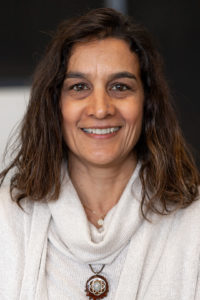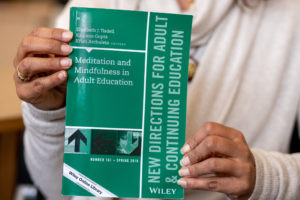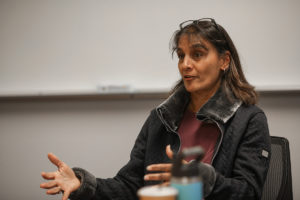Story by Sabrina Robinson

Assistant Professor Kalpana Gupta, co-coordinator of the School of Education’s Adult Education and Training master’s degree specialization at Colorado State University, has engaged in mindfulness and meditation herself for the last 16 years. As a practitioner, she has developed a deep respect for the practices – one that has translated into her adult education and training research.
Gupta’s exploration into how mindfulness and meditation are being used in the modern age, especially in personal and professional settings, led to her contributions to New Directions for Adult and Continuing Education as co-editor of a special edition focused on meditation and mindfulness in adult education.
Teaching more meaningful meditation
In her research and teaching, Gupta explores how people might move beyond the therapeutic techniques of meditation and mindfulness to benefit their lives, especially in education. She hopes that her work will be helpful in teaching people how to explore mindfulness and meditation without fear of the religious and spiritual context of the practices, and beyond its basic uses as a therapeutic tool. Instead, she hopes that knowing more about the origins of the practices and how they are being used now will deepen personal understanding and practice.
“I want to do my part in allowing everybody to understand it deeper than the surface and explore that for themselves,” she said.
As co-editor of the special edition, Gupta helped to review and select the articles included, working with the authors on revisions as needed. She also operated as a liaison between the authors and the publisher, and helped to organize the chapters within the edition.

Gupta co-authored a chapter with Kristi Archuleta, an associate professor at the University of Central Oklahoma. The chapter summarizes the special edition, identifying themes and speculating on the future of mindfulness and meditation in adult education research and practice. The authors identify four key themes in the edition, and encourage adult education practitioners to add discussion and reflection to their meditation and mindfulness instructional methods which allow for a deeper meta-analysis to occur for each individual.
Other chapters in the journal explore the many different ways in which people can engage in the practice of mindfulness, including the cultivation of bonsai trees, martial arts, and various programs and courses offered at universities.
In whatever form mindfulness and meditation take place, Gupta said they are an intensive practice that requires habit and discipline.
“For anybody who has done it, I think they would all agree that it’s hard work,” said Gupta.
Exploring meditation in the secular world
In addition to co-editing the special issue and co-writing the concluding chapter, Gupta wrote the chapter, “The Sacred to the Secular: Using Mindfulness and Meditation as Instructional Methods in Academia.” The chapter examines the spiritual roots of mindfulness and meditation as well as how the practices have progressed in the secular environment.
“We all have our own practices,” said Gupta. “Some of us extend that into our professional context. We have discovered in adult and continuing education that there is work that is being done around meditation and mindfulness, so where do we go from there?”

Mindfulness and meditation have become relatively commonplace in our society, she said, often used as a therapy tool among other things. In “The Sacred to the Secular,” Gupta used neuroscience research on the effects meditation and mindfulness have on the brain and interviews with CSU staff members whose roles include facilitating meditation and mindfulness workshops on campus to describe how these practices can induce acceptance, awareness, happiness, and personal learning, both within and beyond the person meditating.
“I’ve come to this understanding that meditation and mindfulness seem to be used as an intervention tool in the secular context,” said Gupta, “and there’s nothing wrong with that … because, in fact, that is a great way for us to bridge some of our understanding and start to understand it further.”
Today, Gupta points out, mindfulness and meditation are being used in diverse ways by a variety of people in different settings, through apps on mobile phones, organized classes on campus, and more.
“You’ll find meditation and mindfulness being used in primary and secondary schools, in the workplace and organizations – it’s everywhere and it’s global,” said Gupta. “It’s not just something that is happening in the United States; it’s not just something that’s happening in the Asian countries. It’s everywhere.”
The School of Education is part of CSU’s College of Health and Human Sciences.